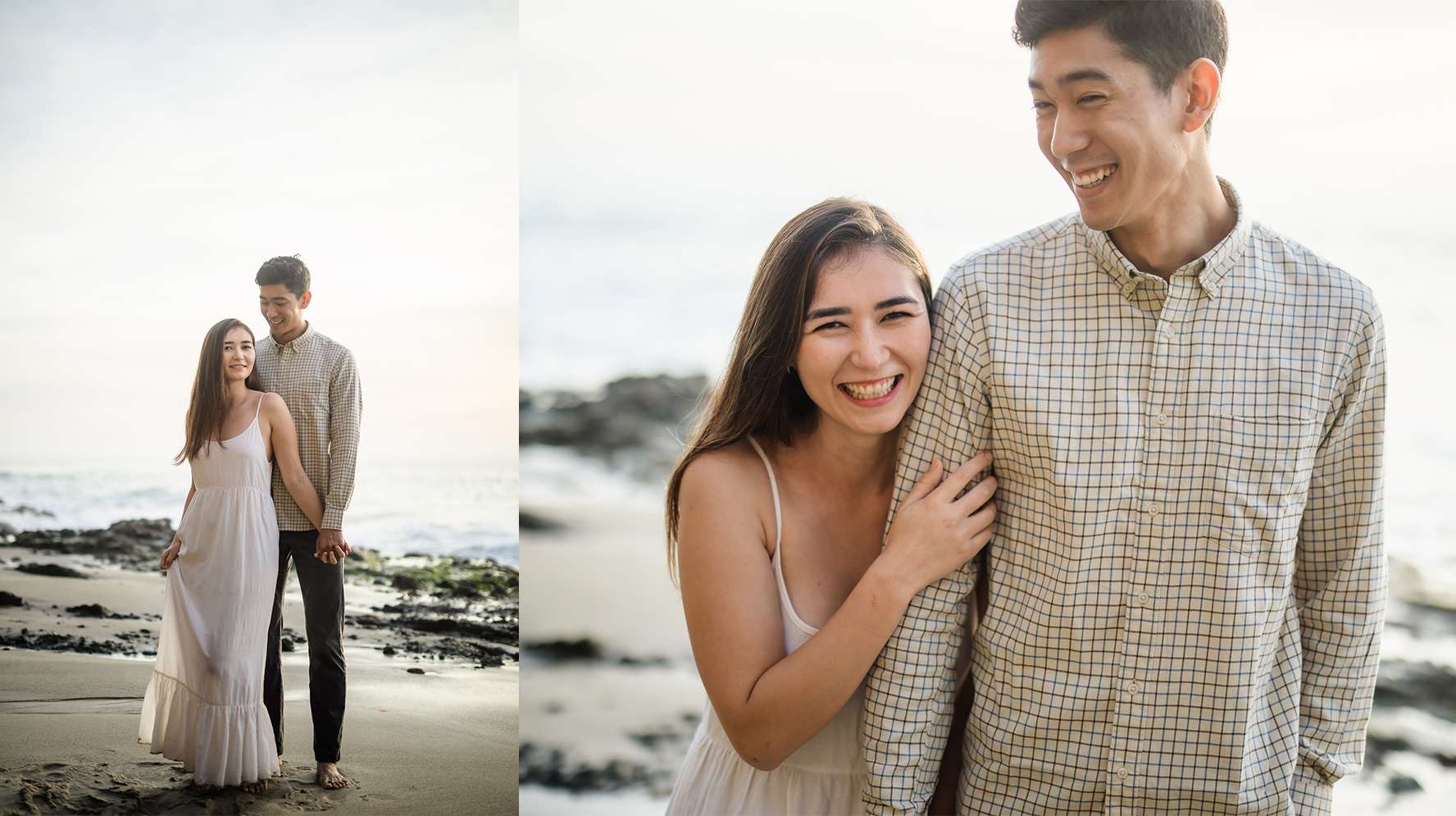
Posing is one of the areas you’ll spend the most time studying in your photography career; quality poses are essential for quality photos. In the years that we’ve been doing engagement sessions we found that the majority of poses for couples photography are based on 5 basic feet and shoulder configurations, and we call these configurations “Foundation Poses.” In this article, we’ll teach you the first 5 couples poses you should master.
Couples Poses Video
Let’s start with the full couples poses video that we created for Adorama TV.
First 5 Couples Poses You Should Learn
We created this Foundation Posing Framework for 4 very important reasons: simplicity, framework, client comfort, and consistency. If you’re new to posing and couples photography you’ll want to develop a good system of Foundation Poses so you can avoid making your couples look uncomfortable or unnatural in front of the camera. This is a two-part series so stay tuned for next week to see the next episode! Let’s start with our first pose, the V-up.
Couples Pose #1: V-Up
 Description: The subjects’ shoulders are hinged on the back and their bodies form the shape of a V; facing toward each other. This is the first and most basic pose in the framework simply because it is a standard and universal way for a couple to pose, similar to what you see on red carpets or casual portraits.
Description: The subjects’ shoulders are hinged on the back and their bodies form the shape of a V; facing toward each other. This is the first and most basic pose in the framework simply because it is a standard and universal way for a couple to pose, similar to what you see on red carpets or casual portraits.
Direction: “Pretend that the area where your shoulders are touching is like the hinge on a door.” Have their feet face slightly in towards each other and their arms wrapped around each others’ backs. Then when you give your subjects directions like, “open up” or “close the door,” they can easily understand and follow what you want them to do.
REWIND: Official Couples Posing Guide – Tips, Cues, & More!
Couples Pose #2: Closed Pose
 Description: Couple is facing in towards each other with their chest and feet are facing in at each other. We call this the closed pose because their chests are closed and away from the camera.
Description: Couple is facing in towards each other with their chest and feet are facing in at each other. We call this the closed pose because their chests are closed and away from the camera.
Direction: “Go ahead and close the door and face in towards each other, chest to chest.”
Couples Pose #3: Open Pose
 Description: The couple is open to the camera with their chest, feet, and hips all facing towards the lens. This is a great pose to set up before you direct your couple to start casually walking. This is also a great pose to show off their outfits and body shapes.
Description: The couple is open to the camera with their chest, feet, and hips all facing towards the lens. This is a great pose to set up before you direct your couple to start casually walking. This is also a great pose to show off their outfits and body shapes.
Direction: “Go ahead and open the door and face towards the camera and have your feet and hips follow.”
Couples Pose #4: Reversed Pose
 Description: One person is facing one direction away from the camera, while the other person is facing the camera. It’s a great pose to get implied shots of just one person.
Description: One person is facing one direction away from the camera, while the other person is facing the camera. It’s a great pose to get implied shots of just one person.
Direction: Have one subject turn their back to the camera while the other turns towards the camera.
Couples Pose #5: Stacked Pose
 Description: One person is standing in front of the other; he is behind her, while her feet are stacked against his. This is similar to a prom pose but… elevated. We want to avoid having one subject hidden by the other so make sure to stagger the stance a bit so both faces are visible. Also, avoid having hands placed around her belly (unless this is a maternity shoot) because it could imply an entirely different meaning.
Description: One person is standing in front of the other; he is behind her, while her feet are stacked against his. This is similar to a prom pose but… elevated. We want to avoid having one subject hidden by the other so make sure to stagger the stance a bit so both faces are visible. Also, avoid having hands placed around her belly (unless this is a maternity shoot) because it could imply an entirely different meaning.
Direction: “Go ahead and stack your feet behind her/him.”
Conclusion
And there you have it, 5 simple poses that will give you the foundation to capture genuine and authentic moments with your couples. Remember, if your client feels uncomfortable, it will likely be seen in the photos. For more information on couples posing and directing make sure you check our SLR Lounge Premium. Tune in next week to watch the second part two this posing tutorial only on Adorama’s YouTube channel!





Get Connected!